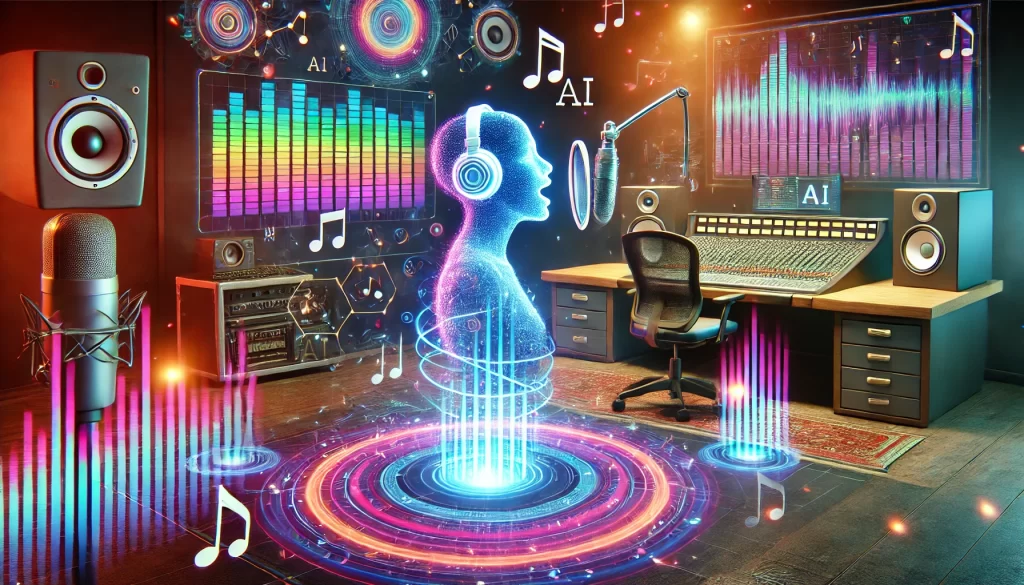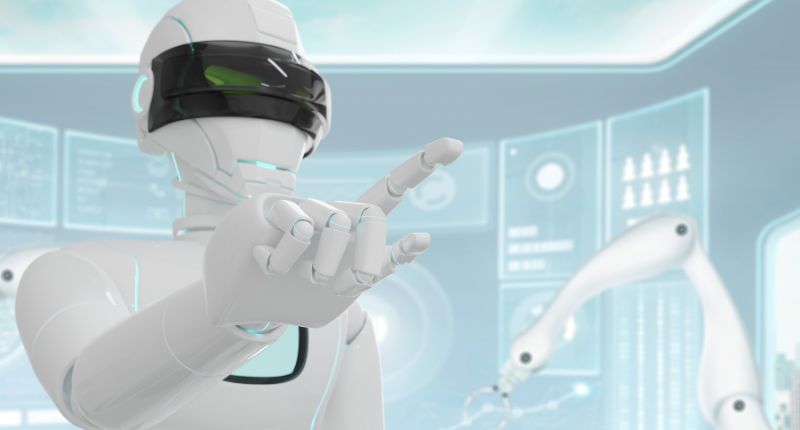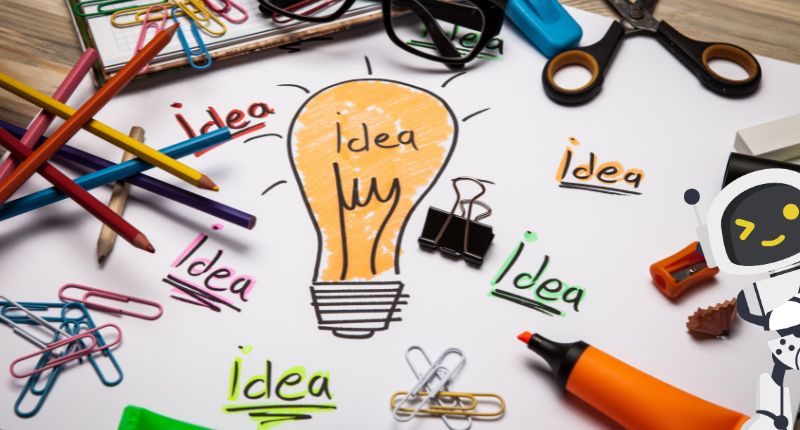Creating AI-generated cover art has become one of the most exciting and innovative uses of artificial intelligence in recent years. With the advent of AI tools capable of generating art in seconds, creators—whether they are musicians, authors, or even game developers—now have the ability to craft unique and visually striking cover images for their projects, often with just a few prompts or clicks.
In this blog post, we will dive deep into how you can create stunning AI-generated cover art. From understanding the basics of AI art to using various tools, and optimizing your designs for different platforms, we’ll cover everything you need to know to How to Make AI Cover.
What Is AI-Generated Cover Art?
AI-generated cover art refers to visual content created using artificial intelligence algorithms and tools that can generate images, illustrations, or graphics based on certain inputs. The process involves feeding a set of instructions—often in the form of text prompts—into an AI model, which then interprets these instructions and produces an image. These tools leverage machine learning models that have been trained on vast datasets, allowing them to recognize and generate intricate visuals.
Unlike traditional graphic design, which requires artistic skills and software proficiency, AI-generated cover art can be created by anyone with access to the right tools, making it accessible to creators without a background in design.
Why Use AI for Cover Art?
- Speed and Efficiency: Creating professional-looking art can take hours or even days. AI tools, however, can generate high-quality cover art in mere minutes, allowing you to move quickly from concept to execution.
- Cost-Effective: Hiring professional designers or artists can be expensive, especially for independent creators or those on a tight budget. AI tools often offer a more affordable option for generating high-quality cover art.
- Creative Freedom: AI can help unlock new creative possibilities. It can visualize concepts that may be difficult to execute manually or create designs based on ideas you might not have thought of on your own.
- Customization and Variability: AI art generators allow you to tweak and adjust your inputs, offering numerous variations. This gives you the freedom to experiment and refine your design until it meets your exact needs.
The Steps to Make AI Cover Art
Creating AI-generated cover art is straightforward, but it does require some planning and understanding of the tools. Here’s a step-by-step guide to get you started.
Step 1: Define Your Concept
Before you even touch an AI tool, you need to have a clear idea of what you want your cover art to convey. Whether you are designing a book cover, music album art, or a game cover, defining your concept will help guide the AI to produce a design that aligns with your vision.
Questions to consider:
- What is the theme or tone of the project (e.g., fantasy, mystery, sci-fi)?
- What emotions do you want the cover art to evoke (e.g., excitement, suspense, calmness)?
- Are there specific colors or styles that you want to feature?
- Do you want to include specific elements like characters, landscapes, or abstract designs?
Tip: The more specific you are in defining your concept, the better the AI can align with your vision. Think of this step like a creative brief you might give a human artist.
Step 2: Choose an AI Art Generator Tool
There are several AI art generation tools available today. Some tools focus on generating realistic imagery, while others are better suited for abstract, surreal, or stylized designs. Below are some of the most popular AI art generators you can use to create cover art.
1. DALL·E 2 (by OpenAI)
DALL·E 2 is an AI image generation tool developed by OpenAI that can generate detailed, creative images from textual descriptions. It is known for its ability to produce high-quality, photorealistic art, as well as its flexibility in creating more abstract or imaginative designs.
- Pros: Can create highly detailed images with fine control over style and composition.
- Cons: Limited to specific use cases and has fewer customization options compared to some other tools.
2. MidJourney
MidJourney is an AI art generation tool that’s widely used for creating artistic, stylized images. It’s particularly popular among digital artists and creators who want unique, stylized designs that lean more toward artistic or surreal representations.
- Pros: Known for its creative, detailed, and abstract art.
- Cons: The generated art can sometimes be too abstract, depending on the prompt.
3. Stable Diffusion
Stable Diffusion is an open-source AI art generation model that is known for its flexibility and customization options. It allows you to fine-tune your artwork and is capable of producing high-quality designs, from realistic to abstract art.
- Pros: Open-source and highly customizable; great for users with technical skills who want more control over their artwork.
- Cons: Can be complex to set up for beginners.
4. Artbreeder
Artbreeder is an AI tool that focuses on blending different images to create unique artwork. You can start with a base image and modify it, allowing for a high degree of control over the final output.
- Pros: Allows you to mix and evolve images, offering a good deal of creative freedom.
- Cons: Less intuitive than some of the other options, and the results can sometimes lack the photorealism seen in other tools.
5. DeepArt.io
DeepArt.io uses AI to transform your photos or basic sketches into artwork in the style of famous artists or specific art genres. While it may not generate images entirely from scratch like some of the other tools, it’s great for enhancing photos or designs.
- Pros: Can turn a basic image into a high-quality, stylized piece.
- Cons: Limited customization when compared to fully generative tools.
Tip: Choose the tool that best fits your style. If you’re aiming for a photorealistic or minimalist design, DALL·E 2 might be best. If you’re looking for something more abstract or stylized, MidJourney or Stable Diffusion might be better.
Step 3: Craft Your Prompts
Once you’ve selected an AI tool, the next step is to craft the right prompts. A prompt is the input text you provide to the AI that guides it in generating your artwork. The more detailed and specific your prompt, the better the AI can understand and create the design you want.
Tips for crafting good prompts:
- Be Specific: Use descriptive language that communicates your vision. For example, instead of saying “a landscape,” you could say, “a dark, moody landscape with storm clouds over a mountain range at dusk.”
- Use Style Keywords: Include style-related terms to influence the look and feel of the art. For instance, you can add “cyberpunk,” “surrealist,” “impressionist,” or “minimalist” to help guide the AI’s aesthetic choices.
- Mention the Mood: Consider the emotion you want to convey. Words like “mysterious,” “exciting,” “peaceful,” or “dramatic” will help set the tone.
- Include Composition Details: If you want specific elements placed in the image, such as the location of the title, focus points, or visual elements, make sure to mention them in your prompt.
Example prompt for a book cover: “A fantasy book cover featuring a glowing castle on a mountain, surrounded by swirling mist, with a dark, stormy sky overhead. The style is reminiscent of classic fantasy illustration, with deep blues and purples. The title ‘The Last Kingdom’ in gold lettering at the top.”
Step 4: Generate the Cover Art
After inputting your prompt, let the AI generate your image. Depending on the tool, this process may take anywhere from a few seconds to a few minutes. In some cases, you may need to provide additional instructions to refine the results.
- Review the Output: Once the image is generated, take a close look. Does it capture the essence of your vision? If not, adjust your prompts and try again. It may take a few iterations to get the perfect result.
- Refinement: If you’re using a tool like Stable Diffusion or MidJourney, you may have the option to refine the image by tweaking parameters such as color palette, composition, or the level of abstraction.
Step 5: Edit and Customize the Artwork
While AI tools can create impressive images, they may not always be perfect. You may need to tweak or enhance the design to better fit your needs. Here are a few ways to edit and refine your AI-generated cover art:
- Photo Editing Software: Use tools like Adobe Photoshop, GIMP, or Canva to make final adjustments. This can include things like cropping, adjusting the contrast, adding text for the title and artist name, or inserting any additional elements.
- Typography: Adding text to the cover is often an essential step. Make sure the font style, size, and placement complement the overall design. Tools like Canva and Adobe Illustrator can help you find and apply the right font.
- Final Touches: Consider adding textures, effects, or other graphical elements to polish the design. For example, you could overlay a subtle texture to give the cover a more tactile, artistic feel.
Step 6: Save and Export Your Cover Art
Once you’re satisfied with the final result, you’ll need to export the cover art in the correct format. Different platforms (e.g., Spotify, Amazon Kindle, or book publishing platforms) have specific requirements for cover image size and resolution.
- For Music: Most music platforms require album covers to be square and high resolution (3000×3000 pixels is a typical size). The most common format is JPEG or PNG, with a color profile that ensures it looks good across devices.
- For Books: For ebooks, the cover image should be at least 1600×2400 pixels, with a 1.6:1 aspect ratio (height to width). For print books, you may need a more complex setup that considers the bleed area (extra space around the edges of the cover that may be cut off during printing), spine width, and back cover. Formats like TIFF or high-resolution PDF are often preferred for print.
- For Video Games: Video game cover art generally requires a more dynamic layout, often with a 3D or rendered look. Ensure you check the specific platform guidelines (e.g., Steam, PlayStation, Xbox) for the required file size and format.
Tip: Always keep a copy of your work in its highest resolution and save it in different formats (e.g., PNG, JPEG, TIFF) for different uses.
Step 7: Use AI for Variations and A/B Testing
Once you have your initial cover art, you may want to experiment with variations or test different designs. Some AI tools like DALL·E 2 and MidJourney allow you to refine the artwork with new prompts or settings to generate multiple versions quickly. This can help you make an informed decision about which design resonates best with your target audience.
- A/B Testing: If you’re not sure which cover will be the most effective (e.g., for a book or album), consider A/B testing. Share multiple cover versions with a small group of potential readers, listeners, or followers to see which one performs better. Use their feedback to choose the final design.
Tips and Best Practices for AI Cover Art
To ensure you get the best possible results from AI art generation, here are some practical tips and best practices to keep in mind:
1. Experiment with Prompts
AI art is highly responsive to your inputs. If you feel your first few attempts don’t quite capture what you want, try tweaking your prompts. Experiment with different descriptions, adjusting your wording, adding specific details, and trying different styles until you find something that feels right. The more you practice, the better you will understand how the AI interprets your inputs.
2. Don’t Overload the Prompt
While being specific is important, too much detail can sometimes confuse the AI or make the output look cluttered. Find a balance between giving enough direction and leaving room for the AI to use its creativity.
3. Use Multiple Tools Together
Sometimes, combining AI tools can result in the best outcome. For example, you might use DALL·E or MidJourney for the main visual design and then enhance or refine it with tools like Photoshop or Procreate. This gives you the flexibility of AI while still maintaining full control over the final touches.
4. Pay Attention to Composition
AI-generated art often produces stunning visuals, but the layout and composition may not always be optimal. Consider how the elements in your cover art will fit together, especially if you need to add text, logos, or other graphic elements. If necessary, use photo-editing software to adjust positioning and balance.
5. Stay On-Brand
The cover art is often the first interaction your audience will have with your work, so it should reflect the tone, style, and branding of your project. Whether you’re designing a book cover, album art, or game poster, your cover should set the expectation for the content. For instance, a futuristic sci-fi album cover might benefit from sleek, metallic designs and neon colors, while a historical novel might call for muted, classic imagery.
6. Keep Legal Considerations in Mind
When using AI-generated art, it’s essential to keep the licensing and legal implications in mind. While many AI tools allow you to use the art for commercial purposes, some models may have restrictions or terms that limit usage. Always double-check the licensing agreements of the specific AI platform you’re using, especially if you plan to sell or distribute your product widely.
Tip: Use AI-generated art for creative exploration and inspiration, but always verify the terms of service to ensure your use complies with the tool’s guidelines.
7. Consider Future Revisions
AI tools are evolving rapidly, and new features are being added regularly. It’s a good idea to revisit your cover art after a few months or years to take advantage of improvements in AI-generated designs. As AI tools get better at generating complex, nuanced images, you might find that your design can be improved with more up-to-date technology.
Challenges of AI-Generated Cover Art
While AI-generated art offers many advantages, it’s not without its challenges. Understanding these potential limitations can help you manage your expectations and make the most of AI tools:
1. Lack of Complete Control
One of the key challenges with AI-generated art is that you can’t always control every element of the image. You might not be able to fine-tune every detail the way a human artist can, and sometimes the AI’s interpretation of your prompt may not fully align with your vision.
2. Unpredictability
AI tools often surprise users with unexpected results. Sometimes, this is a positive, as it can introduce new creative directions that you may not have considered. However, there’s always the risk that the results may not be what you hoped for. Being prepared to iterate and refine your designs is essential.
3. Ethical Concerns
As AI-generated art becomes more prevalent, there are ongoing debates about the ethical implications of using AI for creative work. Some artists and creators argue that AI-generated art could devalue human artistry or lead to a loss of originality. While this is still a developing conversation, it’s important to consider how you present AI-generated work and to credit the AI tools where appropriate.
Conclusion: How to Make AI Cover
AI tools have opened up new possibilities for creating cover art, making it easier, faster, and more affordable than ever before to generate eye-catching designs. Whether you’re a musician, author, game developer, or content creator, you can harness the power of AI to produce high-quality, professional-looking cover art with just a few clicks.
By understanding how to craft effective prompts, choosing the right tools, and refining your designs, you can create cover art that not only represents your work but also attracts attention and engages your audience. While there are challenges and limitations to be aware of, the potential of AI-generated art is immense—and it’s only getting better.
So, whether you’re working on your next album, book, or game, don’t hesitate to dive into the world of AI art and see where your creativity can take you.
Explore innovative ways to harness AI with our blog on AI Product Ideas: Exploring the Future of Innovation. Discover groundbreaking concepts and opportunities to stay ahead in the AI revolution. Read more here.


